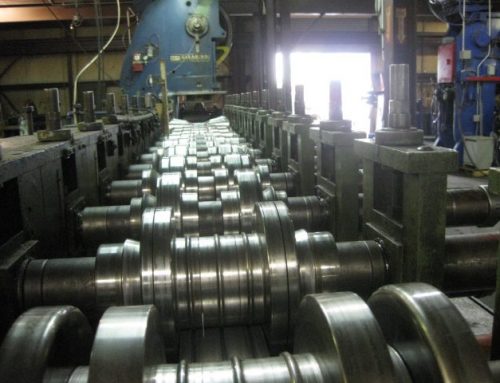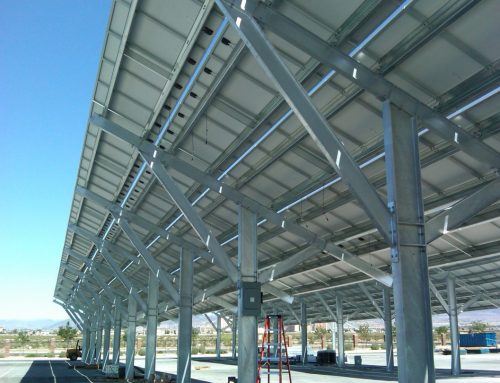Waste in manufacturing is a big topic, especially when evaluating your supply chain to ensure sustainable operations. Roll forming is a surprisingly low-waste process and our team is always looking for further ways to improve our process and reduce unnecessary costs.
By its nature, roll forming uses the majority of the raw material purchased, with very low scrap rates. Flat rolls of metals, including steel, stainless steel, and aluminum, are rolled into various cross-sections. Thanks to precise cut-off dies and good quality control, almost all of the metal makes it into a finished part. The tiny rounds of metal pushed out by our in-line punches are the only scrap part of our raw material.
 However, there are other ways our team looks to ensure we’re a low waste process. The choice of lubricating oil is regularly re-evaluated to make sure we are using something that is environmentally friendly and either leaves a protective coat on the metal or evaporates with no residue. We re-use pallets for raw materials and tooling, and we regularly re-use in-house tooling thanks to our Standard Tooling Catalog.
However, there are other ways our team looks to ensure we’re a low waste process. The choice of lubricating oil is regularly re-evaluated to make sure we are using something that is environmentally friendly and either leaves a protective coat on the metal or evaporates with no residue. We re-use pallets for raw materials and tooling, and we regularly re-use in-house tooling thanks to our Standard Tooling Catalog.
Our team also works with our customers to develop a process for re-usable packaging. Especially when we are delivering parts to customers on a just-in-time basis, we want to be able to use the packaging again and again, cutting down on waste.
If you’re interested in learning more about the roll forming process, reach out to a member of our sales team today. Whether you want to use parts from our Standard Tooling Library to make a simple shape or have a custom cross-section, they will guide you through the design and development process.







